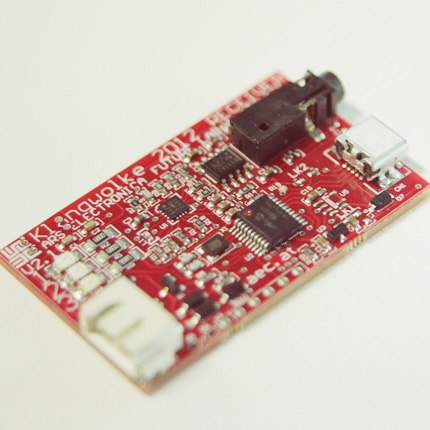Open Source has become an indispensable part of software & hardware development. To find out what’s so good about this and what it has to do with Ars Electronica, check out the following post.
Anyone who surfs the Web these days in search of innovative software invariably encounters the term open source, whereby the developer offers a behind-the-scenes look so users can see how a program works. Users can help themselves to the source code, modify it and, if they like, create something totally new. In recent years, major corporations have joined the ranks of those who have recognized the potential strengths of open-source projects. Big players have participated in various developments and, needless to say, made a profit doing so.
Now, it’s also quite common to find hardware governed by these terms & conditions. Whether we’re talking about construction plans for smartphones, media servers or handguns, the growing democratization of manufacturing-ranging from a shared lab facility to a 3-D printer in a producer’s own living room-has multiplied the possibilities of turning out something new and doing it very quickly.
Such collaboration among diversified crews results in more and better projects. The beneficiaries include those who have no interest whatsoever in DIY.
Since Ars Electronica has always made it its business to stay in tune with the times when it comes to monitoring leading edge technologies’ impacts on society and people’s everyday life, using open-source solutions in as many projects as possible is something that the Futurelab has always done as a matter of course-to create a broad basis for new developments and to foster exchange with others, as well as to benefit from the know-how provided by others worldwide. Here is a list of projects we’re pleased to make available:
The LinzerSchnitte

The LinzerSchnitte made their big public debut at “The Cloud in the Web,” the 2012 voestalpine Klangwolke in which thousands of letters of the alphabet were illuminated in time to the music. The LinzerSchnitte are miniature controllers that can be activated via radio and launch various commands. Ray Gardiner, the father of Futurelab staffer/artist Matthew Gardiner, did the groundwork for this little marvel. The corresponding Github repository is at https://github.com/RayGardiner/LinzerSchnitte-.
OpenAIR – A Fader-less Mixing Console

Radio FRO commissioned Veronika Pauser and Michael Platz to develop a mixing console that can be operated without faders and is programmable to make it user-friendly for people with impaired motor skills. It features open-source software and hardware. https://ars.electronica.art/aeblog/tag/openair/
Connecting Cities

This is a European initiative designed to foster the presentation of artistic content on jumbo-format displays in public settings. The Futurelab is one of the facilities providing technical support-for instance, a Façade Processing Library that makes it possible to display content on LED façades like the one on the Ars Electronica Center, or developing TUIO or SFML protocols to communicate with multi-touch interfaces and control various elements via these interfaces. The corresponding repository is at https://github.com/ConnectingCities
CADET
EMG-Shield
The Center for Advances in Digital Entertainment Technologies (CADET) is a joint venture of the Ars Electronica Futurelab and the Multimedia Technology and Multimedia Art program at the University of Salzburg’s Department of Applied Sciences. CADET is doing R&D on new possibilities for full-body interaction with computer systems, avatars and the like. The corresponding Github repository is at https://github.com/cadet
Open source is not only essential to technological innovation; it also has the potential to influence many aspects of social life. The Futurelab will continue to support this development in the future.
